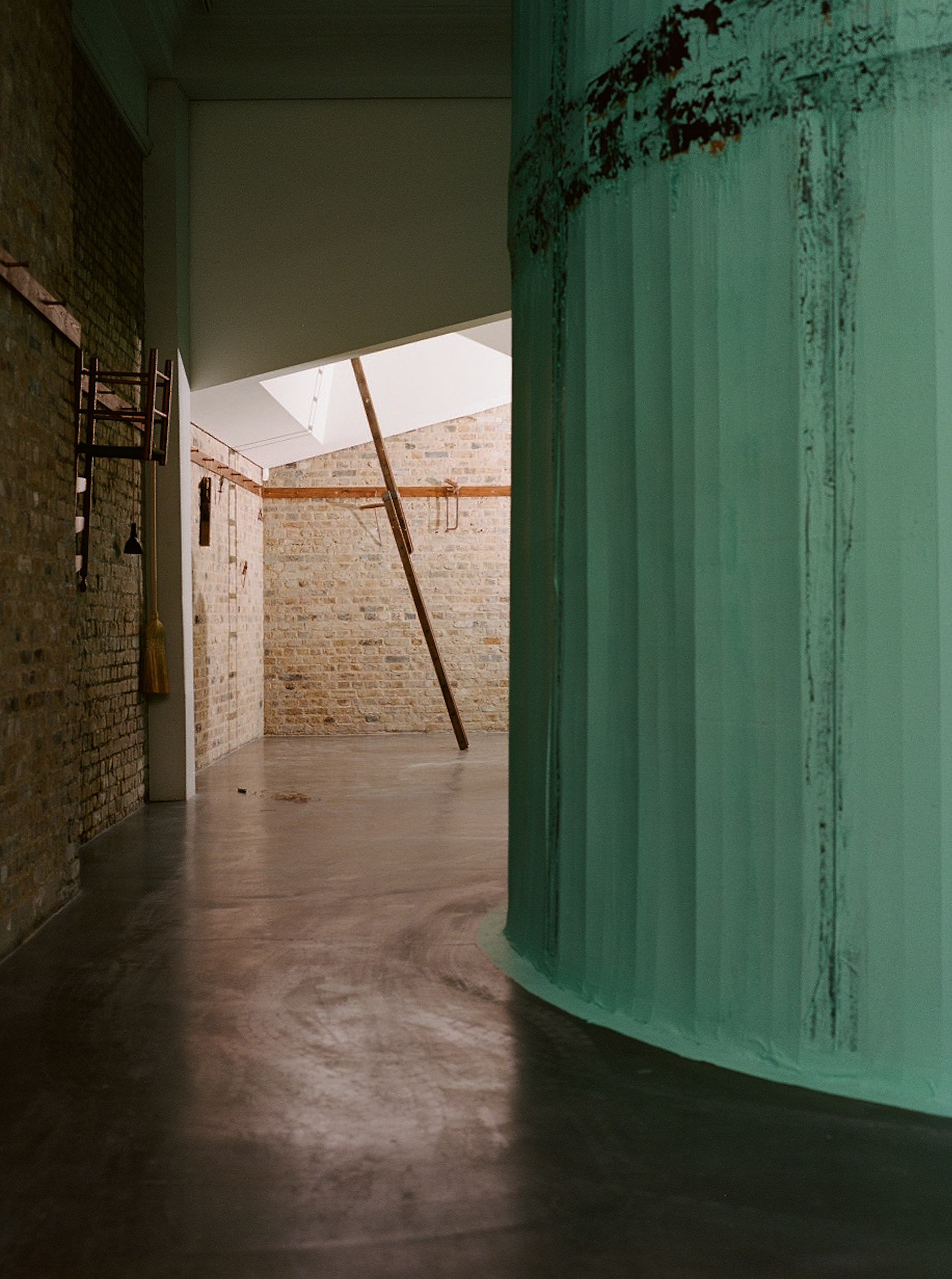Category: Commissions — Published:
When Carlos Bunga (b.1976 Portugal) first came for a site visit in advance of planning his exhibition Something Necessary and Useful (2020), he was struck by the gentrification of the area surrounding the Whitechapel Gallery – the contrast of old and new, demolition, ruins and reconstruction. His installation reflects the mutating city with clear contrasts between materials and forms. For the first time in his work he incorporated furniture, to speak of both the monumental and the domestic, and to hint at the space’s previous use as a reading room where bodies sat at tables and on chairs.
The performance, Domestic Revolution (2020), was filmed during the installation of the exhibition, almost like a test to see how a vital item of household furniture stands up to the cityscape. With a beautifully crafted Shaker chair strapped to his back, Carlos does a circle around the block where the Gallery stands, walking down Victorian alleyways, past groups of congregating youths, back through busy Brick Lane to the Gallery entrance on Whitechapel High street. It is both a journey through architectural and social history, and a journey through the genesis of his work.
Bunga draws on his own experience of displacement and loss in his first major UK commission, also taking inspiration from the American Shaker movement’s insistence on simplicity in their interiors and furniture prompting him to explore what is necessary and useful in art, architecture and design. By upturning and placing a chair on a peg rail, can it take on another function? Can a chair carry the memories of its locations and use? During the Covid-19 pandemic in 2020, has our relation to our furniture, our homes, our places of work and leisure been revolutionised?

Carlos Bunga makes painted cardboard constructions and repurposes domestic furnishings and fabrics to create an evolving installation in dialogue with the historic interiors of the gallery and its public for his first UK commission. Bunga encourages the public to witness his installation in progress, and to see it cut and re-arranged during the course of the exhibition. There are no fixed forms in Bunga’s environments – everything can be moved and transformed.
Carlos Bunga (b. 1976, Porto) lives and works in Barcelona. He studied painting at the Escola Superior de Arte e Design in Caldas da Rainha in Portugal. Solo exhibitions include: Hammer Museum, Los Angeles (2011), Museu Serralves, Porto (2012), Museo Universitario de Arte Contemporáneo, Mexico City (2013), Haus Konstruktiv Museum, Zurich (2015) and the Museu d’Art Contemporani de Barcelona (2015) and Museum of Art, Architecture and Technology (MAAT), Lisbon (2019), Museum of Contemporary Art, Toronto (2020) and Secession, Vienna (2021). Group exhibitions include: Manifesta 5, San Sebastián (2004), the New Museum, New York (2007), Warsaw Museum of Modern Art (2009), 14th Carrara International Sculpture Biennial (2010), 29th São Paulo Biennial (2010), Artes Mundi 6, Cardiff (2013), and the Chicago Architecture Biennial (2015). His work is included in notable collections including: The Museum of Modern Art (New York); “la Caixa” Collection of Contemporary Art (Barcelona); and Hammer Museum (Los Angeles). He is currently represented by Galería Elba Benítez (Madrid) and Alexander and Bonin (New York).